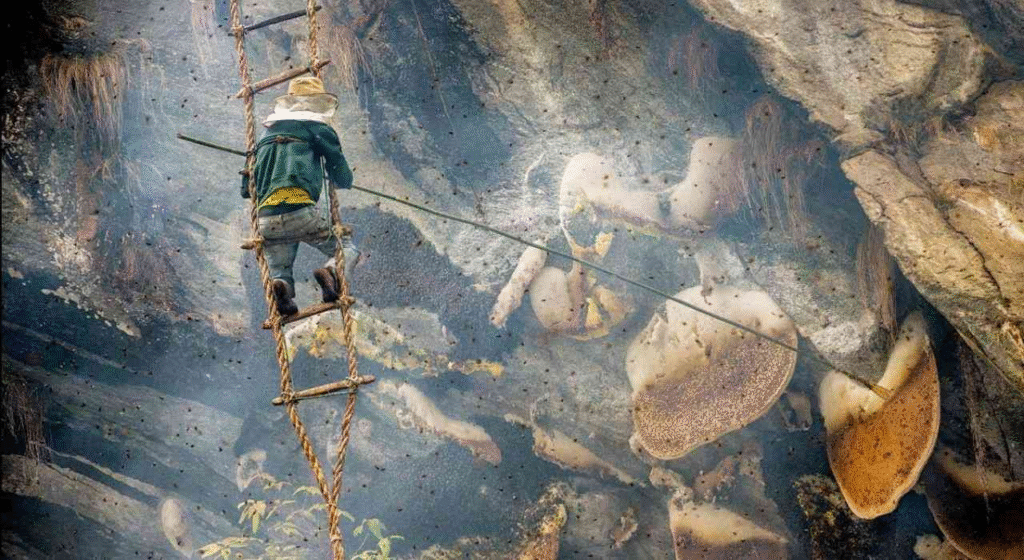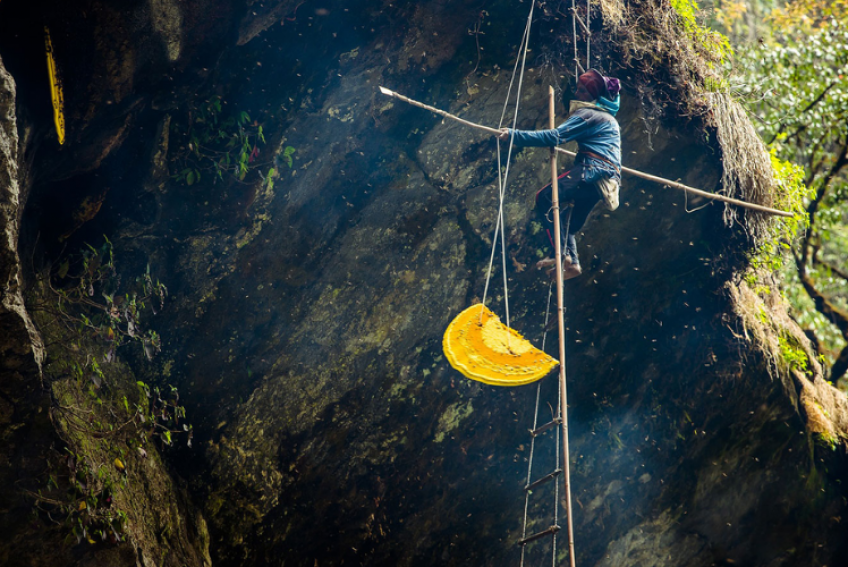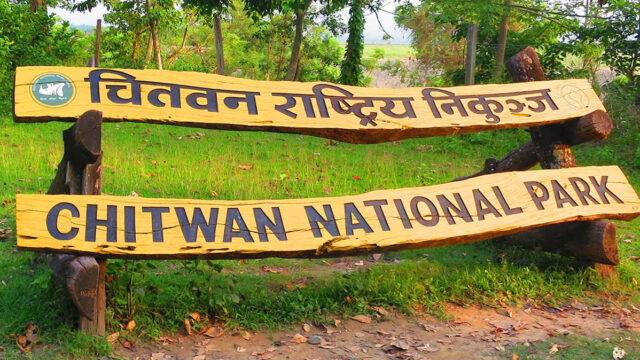The ancient and adventurous tradition of honey hunting has commenced once again on the cliffs of Swat, Annapurna Rural Municipality–5 of Myagdi district. Carried out every year during the first week of the Nepali month of Jestha (mid-May), this time-honored ritual sees the local community come together to collect wild cliff honey through a highly coordinated and dangerous process.
Led by local honey hunter Lok Bahadur Paija, the community successfully harvested around 40 liters of wild honey from Chhahare Cliff on Tuesday. The team, suspended on ropes (locally called “Parang”), included both senior and young members such as 72-year-old Kesh Bahadur Tilija Pun, Tul Bahadur Purja, Sujan Tilija, and Sanam Paija. Despite the inherent danger, they descended the vertical cliffs with impressive skill and courage.
Around 20 individuals participated in this expedition, assisting with collection, initial processing, and logistics. The harvested honey, extracted from steep and narrow rock faces known as “Akkare Bhirs”, is considered not only a delicacy but also a cultural and medicinal treasure.

Before the harvest, a ritual puja was performed in line with traditional Magar customs to ensure safety and success. Swat villagers, completing their daily chores, flocked to Chhahare Cliff to witness the rare event. Though last year’s harvest reached 200 liters, this year saw only a fifth of that yield due to unfavorable weather. Continuous rainfall prevented bees from accessing flower pastures, leading them to consume more of their honey, explained Paija. Chhahare Cliff, which hosted 11 honeycombs, saw reduced productivity.
Preparation is now underway to conduct the next honey hunt on Wednesday at Chhisko Tauko Cliff, along the trekking route from Swat to Khopra. An estimated 20 hives have been spotted in that area, promising a potentially higher yield.
The wild cliff bees inhabit steep mid-sections of rocky hills near water sources. These bees migrate from lowland warmer regions to the upper cliffs as temperatures rise. Their diet is sourced from the diverse flowers blooming across the forests, which gives cliff honey its distinct medicinal and energizing qualities.
Interestingly, this spectacle is not just limited to locals. Tourists, too, are increasingly drawn to the thrill and tradition of honey hunting. Sagar Parajuli, a tourist from Kathmandu, shared his excitement, stating, “It was spine-chilling to watch honey hunters hanging from ropes to collect honey. The taste is incredible, but it comes at the risk of life.”

Honey Hunting
Hunters use traditional methods passed down through generations. The upper and lower teams coordinate, one drops ropes from the cliff top while the other waits below or above to receive the honey in containers. Smoke is used to drive away bees, making it safer to cut the honeycombs. However, when the smoke is blown into the hive, bees can become aggressive, forcing nearby assistants to hide in caves or behind trees until the swarm disperses.
Modern safety equipment, including ropes and belts, has been adopted in recent years, significantly reducing the danger. Veteran hunter Kesh Bahadur, now 72, remarked, “A decade ago, the risks were much higher. We were constantly at risk of bee stings and falling. With new safety gear, the hunt has become much safer.”
Swat’s cliff honey is treasured not only for its unique taste and energy-boosting properties but also for its religious significance. According to resident Bal Bahadur Tilija, the honey is often used in religious ceremonies and makes for a popular gift among relatives living abroad or in cities.

After each harvest, the community holds a meeting to distribute the honey fairly. The participants are categorized into three groups: climbers, assistants, and villagers. Once local needs are met, any excess honey is sold. The current market price stands at NPR 3,000 per liter.
Many from Swat who have moved to urban areas or abroad return each year just to witness or take part in this cultural tradition. Chandra Pun, a resident currently living in Pokhara, shared, “I come home every year to enjoy fresh honey and witness the hunt. It’s a tradition rooted in our heritage.”
Swat has practiced honey hunting since the early days of its settlement. Now, local authorities are working to give this age-old tradition a new life through tourism. Rajesh Tilija Pun, Ward Chairperson of Annapurna Rural Municipality–5, stated, “We plan to modernize and promote honey hunting by improving safety, processing, and storage, and linking it with tourism to attract both domestic and international visitors.”
Efforts are underway to transform honey hunting into a community-based tourism model, turning Swat into a hotspot for cultural and adventure tourism. With the increasing interest from tourists and the support from local leaders, this tradition is poised not only to survive but thrive in the years to come.






